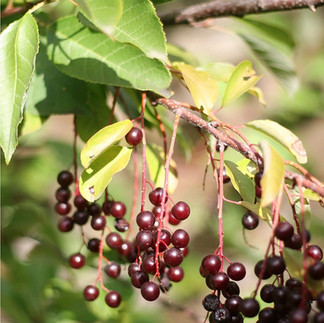Buckthorn is bad for the forest; Best to remove it
- Arco group
- Jan 28
- 2 min read
Buckthorn is an invasive species to North America which was originally imported from Europe to be a hedge. It's spreads quickly and is a common shrub in forests. If birds are lacking food, they will eat the berries, but the berries are poorly digested.
Images: Buckthorn with berries in winter, and Branch leaves (Credit Photo by Paul Wray; Iowa State University).
There are two types of Buckthorn - Common ( or European), and glossy buckthorn are the two non-native, invasive buckthorn species found in Minnesota. They became a nuisance plant, forming dense thickets in forests, yards, parks and roadsides. They crowd out native plants and displace the native shrubs and small trees in the mid-layer of the forest where many species of birds nest.
Buckthorn shrubs leaf out early and retains its leaves late into the fall, creating dense shade that helps it to out-compete many native plants.
Why is buckthorn a problem?
• Threatens the future of forests, wetlands, prairies, and other natural habitats.
• Out-competes native plants for nutrients, light, and moisture.
• Degrades wildlife habitat.
• Contributes to erosion by out-competing plants on the forest floor that help hold soil in place.
• Serves as host to other pests, such as crown rust fungus and soybean aphid.
• Creates messy fruits that stain sidewalks and driveways.
• Lacks “natural controls,” such as insects or disease that would curb its growth.
Legally, Buckthorn is considered a nuisance species in Minnesota. The Minnesota Department of Agriculture lists common buckthorn and glossy buckthorn as restricted noxious weeds. This means that the sale, transport, or movement of these plants is prohibited statewide.
Ways to remove Buckthorn:
Cut the trunks
Chemical
Burn it
Yard waste - make sure they can accept nuisance species.
Always make sure to call utilities to confirm there aren't any utility lines in the area of buckthorn removal.
Images: Honeysuckle shrub, Chokecherry (photo Sandhawk native species), and spring flowers, bloodroots on forest floor.
Native Species to re-forest area:
High–bush cranberry, Viburnum trilobum
Black chokeberry, Aronia melanocarpa
American hazelnut, Corylus americana
Pagoda dogwood, Cornus alternifolia
Chokecherry, Prunus virginiana
Nannyberry, Viburnum lentago
References:












Comments